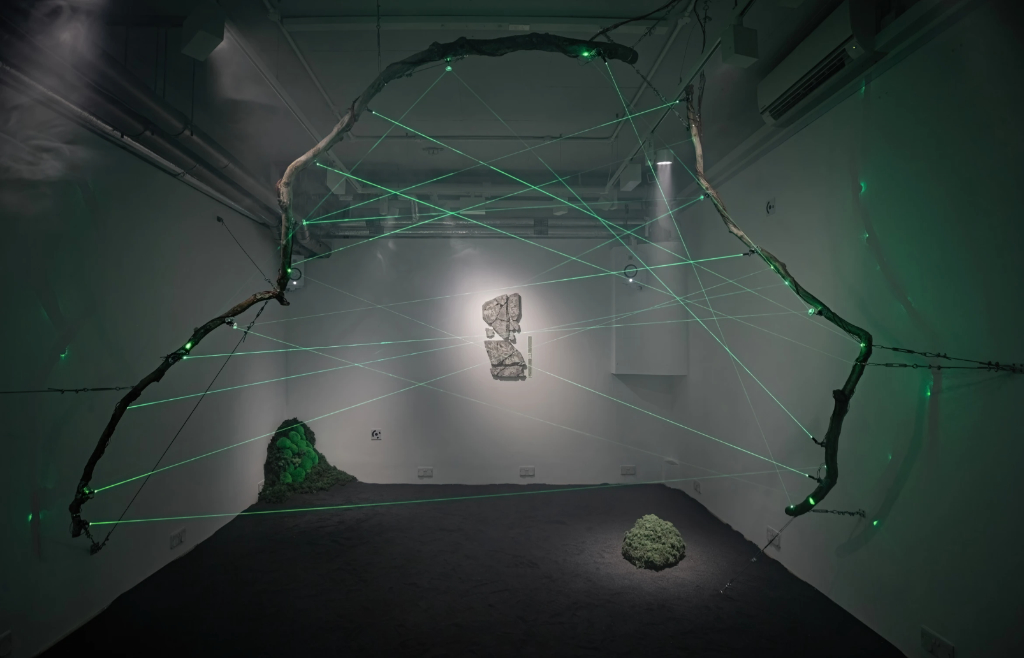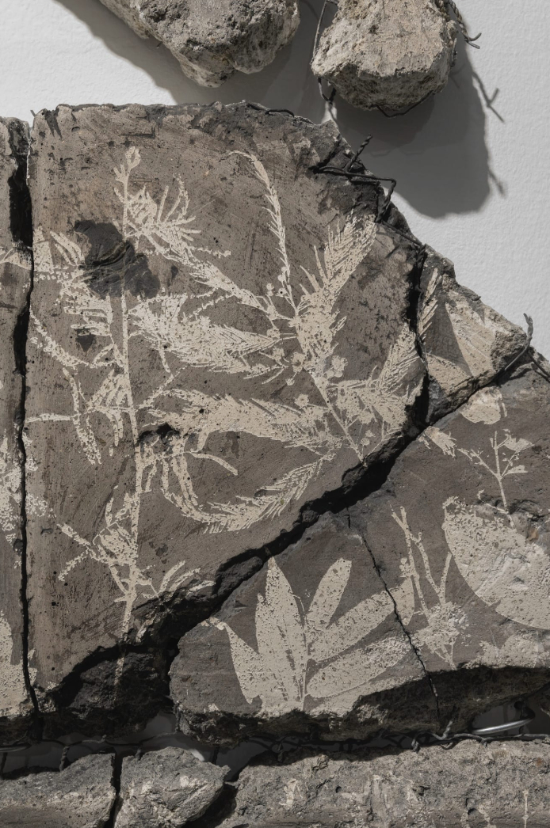Text by Daniela Silva

Matteo Zamagni is a multimedia artist known for his captivating installations exploring the intersection between technology, nature, and spirituality. His background in engineering and sound design informs his artistic practice, which focuses on creating immersive experiences that blur the lines between reality and virtuality. His work is characterised by a deep concern for the environment and a desire to explore the potential of technology to promote sustainability.
His recent exhibition, Refracted Bodies, is a thought-provoking journey that blends virtual reality with real-life objects and materials to create an immersive experience that challenges viewers to reflect on our relationship with the natural world. The starting point for the inception of Refracted Bodies was Matteo’s fascination and inspiration with multiple indigenous communities from different parts of the world.
I have been fascinated and inspired by multiple indigenous communities from different parts of the world for quite a long time now. They hold a fundamentally different way of living from our modern civilisation, one which is deeply in harmony with the Biosphere. In this project, I wanted to tap into ancestral knowledge of nature and the cosmos, thinking, What if, shortly, indigenous people’s ethics, intuition and spiritual ideas were adopted into our modern civilisation? What would that imply? What if it brought radical shifts in the way people think and live? What if it could subvert the objectives of our current economic system, shifting from endless profits to the welfare and wellbeing of all living entities on Earth? Zamagni shared with CLOT via Email.
In Refracted Bodies, Zamagni juxtaposes relics of hyper-industrialisation with the preservationist outlook of indigenous culture, where ecological, cosmological, and spiritual understanding paved the way for a symbiotic relationship with nature. He created a 3D abandoned underground mine, representing capitalism’s aggressive and omnipresent nature. I took it as a starting point for the project and decided to create a 3D abandoned underground mine whose incessant and intense extraction has depleted all its resources.
Zamagni also designed a 3D replica of a cave that is protected under National Trust and fully rewilded. Then I imagined a future civilisation that integrated those ancient, indigenous ways with our current capabilities to create tools that protected the environment and helped it regain life.



He told us that his virtual environments are tied in with the physical space using found objects, scrap metals, and electric cables, combined with a mixture of low-impact and natural materials and more synthetic compounds. The objects’ symbolism further expresses this dialogue, with laser engravings depicting native medicine plants, star constellations, rivers, energy exchange, and state transformations. This dialogue is further expressed in the symbolism on both objects, ‘Untitled’ and ‘Supercluster’ using laser engraving; the former displays shadow-like silhouettes of a range of native medicinal plants, an almost forgotten practice in our modern world which helped our ancestors connect with the spiritual realm and the gods and a facilitator to humankind’s evolution. The latter has engravings depicting stars, constellations, rivers, energy exchange, and state transformation. He continued.
The immersive experience of Refracted Bodies is a playful combination of mixed reality and established artistic media. The physical work introduces the virtual world by setting the scene and stimulating visitors to what may lay beyond. Matteo explains that he had to design the VR experience as a loop between each world to give each visitor the time necessary to explore it at their own pace and the possibility of quitting the experience at any time. In addition, the placement of certain features in the VR environments is intentionally located in specific areas of the gallery space to help the participants navigate from one end of the room to the other, avoiding bottlenecks and optimising flow.
One of the challenges of such an experience is ensuring that the viewer interacts with different elements safely. As a result, Zamagni had to adopt multiple features for object detection for extra safety. They turned out to be a playful addition to the work itself as it overlays outlines of objects nearby and displays the boundaries of the room when you get close to it. Another significant challenge was VR development itself. Despite being around for many years now, he says that it still needs to be more manageable and predictable to work with, requiring a lot of troubleshooting and compromises.
Found objects are a recurring theme in Zamagni’s work, and he habitually reclaims abandoned objects. Something fascinates me about things that have been discarded and seen as worthless. These found objects help drive the piece’s narrative as they symbolise the waste that comes with our excessive and short-term use of disposable tools and electronics, all designed to fail so that we can buy more. I need to contextualise the worlds I create in reality as the themes I comment upon are real. So I used real-life objects as the bridge that unites the experience. It creates a familiar thread for the visitor to follow and slowly dip into. It grounds the work into the real world.
The exhibition Refracted Bodies is a captivating installation that urges us to reconsider our relationship with the natural world and learn from indigenous communities’ wisdom on nature and the cosmos. By merging real-life objects and materials with virtual reality, the exhibition provides an immersive experience that encourages us to contemplate the potential of a future civilisation that combines ancient indigenous practices with our modern abilities to protect the environment and promote its regeneration. Ultimately, the exhibition’s overarching theme prompts us to shift towards a more sustainable and equitable future.





